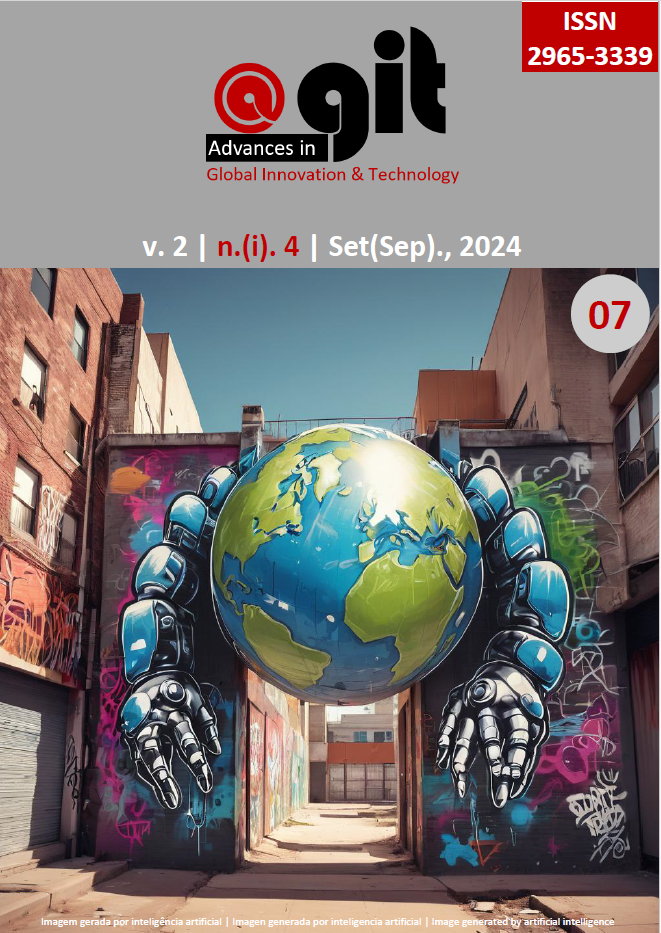The New Silk Road
Foreign Trade as an Inducer of National Development
DOI:
https://doi.org/10.29327/2384439.2.4-1Keywords:
New Silk Road, China, Eurasia, Multipolar WorldAbstract
This study focuses on contemporary Chinese foreign policy, particularly the development of the "New Silk Road" initiative. This ambitious project aims to connect the People's Republic of China (PRC) with Europe and Africa through a network of land and maritime routes, traversing key regions in Central Asia and the Middle East. The core objective of this research is to elucidate the terrestrial routes of this policy and the consequential influence of Chinese geopolitics in the international community, both currently and in the foreseeable future. The research approach employed is an integrative review, utilizing descriptive, qualitative, and exploratory case study methodologies. The study explores indications that China may not only integrate but also become a leading promoter of complete economic and commercial integration within the region and its vicinity. This is attributed to China's significant geopolitical role, its rapidly evolving market policies, and the immense growth potential, particularly in social and economic spheres. The analysis of these elements suggests a favorable scenario for China to implement its new initiative, potentially reshaping regional economic and geopolitical landscapes.
Downloads
References
BANCO MUNDIAL. China 2030: building a modern, harmonious, and creative society. Washington DC: The World Bank And The Development Research Center Of The State Council, 2013. Disponível em: <https://www.worldbank.org/content/dam/Worldbank/document/China2030-complete.pdf.> Acesso em: 16 de agosto de 2020.
BARBOSA, M.; et al. Nova Rota da Seda e a Ascensão Pacífica Chinesa. NEARI EM REVISTA / VOL.2, N.2, p. 32, 2018.
BEESON, M.; LI, F. China's Place in a Regional and World Governance. Global Policy Review. The University of Durham and John Wiley and Sons, 2016.
COHEN, S. B. Geopolitics: the Geography of International Relations. 3ª ed. United Kingdom: Rowman and Littlefield, 2015.
“Hardly an Oasis.” The Economist. Disponível em: <https://www.economist.com/asia/2014/11/15/hardly-an-oasis.> Acesso em: 16 out. 2020.
HONG, Z. (B). China's One Belt One Road: an overview of the debate. ISEAS - Yusof Ishak Institute, 2016.
KAPLAN, R. D. The Revenge of Geography: what the world map tells us about the upcoming conflicts. Random House Trade Paperbacks, 2012.
KOTZ, R. L. A nova Rota da Seda: entre a tradição histórica e o projeto geoestratégico para o futuro. Dissertação (Mestrado em Relações Internacionais). Centro Sócio-Econômico, Universidade Federal de Santa Catarina, Florianópolis, 2018. Disponível em: <https://repositorio.ufsc.br/handle/123456789/193931.> Acesso em: 24 out. 2020.
CORREIA, P. de P. Geopolítica e Geoestrategia. Nação e Defesa, N.º 131 – 5.ª Série, pp. 229-246, 2012. Acesso em: 16 de out. de 2023.
LIN, J. Y. The economics of china’s new era. Project Sindicate, [s.l.], Dec 1, 2007. Disponível em: <https://www.project-syndicate.org/onpoint/the-economics-of-china-s-new-era-by-justin-yifu-lin-2017-12.> Acesso em: 15 out. 2020.
MELLO, L. I. A. A geopolítica do poder terrestre revisitada. Lua Nova, São Paulo, n. 34, p. 55-69, Dez. 1994. Disponível em: <http://www.scielo.br/scielo.php?script=sci_arttext&pid=S0102-64451994000300005&lng=en&nrm=iso>. Acesso em: 18 nov. 2020.
PIRES, M. C.; PAULINO, L. A. As novas rotas da seda e seus impactos sobre a economia mundial. Debate Acadêmico, São Paulo, 16 mai. 2017. Disponível em: <https://www2.unesp.br/portal#!/debate-academico/as-novas-rotas-da-seda-eseus-impactos-sobre-a-e-economia-mundial.> Acesso em: 02 out. 2020.
PETERSEN, A. The World Island: Eurasian geopolitics and the Fate of the West. Oxford: Praeger Security International, 2011.
SANG, B. Geoestratégia da China e a Nova Rota da Seda: Uma análise a partir dos documentos oficiais chineses e seus desdobramentos para o Brasil. Dissertação de Mestrado. Programa de Pós-graduação em Relações Internacionais San Tiago Dantas da Universidade Estadual Paulista “Júlio de Mesquita Filho” (Unesp), da Universidade Estadual de Campinas (Unicamp) e da Pontifícia Universidade.
Published
How to Cite
Issue
Section
License
Copyright (c) 2024 Henrique Domingues, Leonardo Jorge Argollo, Paulo Teixeira Ribeiro

This work is licensed under a Creative Commons Attribution-NonCommercial-ShareAlike 4.0 International License.
Copyright Policy
By submitting a manuscript for publication in the journal Advances in Global Innovation & Technology (@_GIT), authors agree, in advance and unrestrictedly, to the following terms:
- The authors retain the copyright and grant to the Journal Advances in Global Innovation & Technology (@_GIT) the right of first publication of the manuscript, without any financial burden, and waive any other remuneration for its publication in the Journal of Advances in Global Innovation & Technology (@_GIT).
- Upon submission to the Journal of Advances in Global Innovation & Technology (@_GIT), the manuscript is automatically licensed under the Creative Commons Attribution License, which allows the sharing of the work with acknowledgment of authorship and initial publication in the Journal Advances in Global Innovation & Technology (@_GIT).
- Authors are authorized to enter into additional contracts separately, for non-exclusive distribution of the version of the work published in the Journal Advances in Global Innovation & Technology (@_GIT) (publish in repositories or as a book chapter), with acknowledgment of the initial publication in the Journal Advances in Global Innovation & Technology (@_GIT), provided that such agreement does not imply an endorsement of the content of the manuscript or the new vehicle by the Journal of Advances in Global Innovation & Technology (@_GIT).
- Authors are allowed and encouraged to publish and distribute their work online, in institutional repositories, for example after the editorial process is completed.
- The authors warrant that they have obtained proper permission from their employers for the transfer of rights under this agreement, if those employers own any copyright in the manuscript. In addition, the authors assume any and all responsibility for possible copyright infringements of these employers, exempting Advances in Global Innovation & Technology (@_GIT) from any and all liability in this regard.
- The authors assume all responsibility for the content of the work, including the due and necessary authorizations for the disclosure of data collected and results obtained, exempting the Journal of Advances in Global Innovation & Technology (@_GIT) from any and all liability in this regard.













